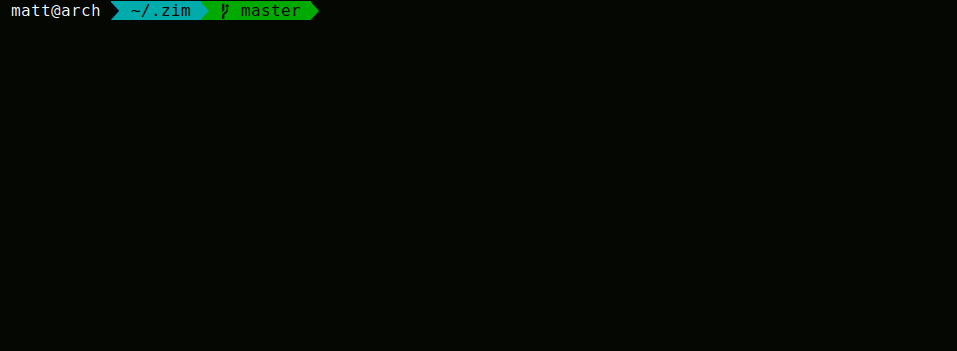| .github | ||
| modules | ||
| templates | ||
| tools | ||
| .gitignore | ||
| .gitmodules | ||
| init.zsh | ||
| LICENSE.md | ||
| login_init.zsh | ||
| README.md | ||
Zsh IMproved FrameWork
What is Zim?
Zim is a Zsh configuration framework with blazing speed and modular extensions.
Zim is very easy to customize, and comes with a rich set of modules and features without compromising on speed or functionality!
What does Zim offer?
If you're here, it means you want to see the cool shit Zim can do. Check out the available modules!
Below is a brief showcase of Zim's features.
Speed
For a speed comparison between Zim and other frameworks, see this wiki entry.
Themes
To preview some of the available themes, check the themes wiki page.
Fish-shell history navigation
Syntax highlighting
And much more!
Zim has many modules! Enable as many or as few as you'd like.
Installation
Installing Zim is easy. If you have a different shell framework installed (like oh-my-zsh or prezto), uninstall those first to prevent conflicts. It can be installed manually by following the instructions below:
-
Start a Zsh shell:
zsh -
Clone the repository:
git clone --recursive https://github.com/zimfw/zimfw.git ${ZDOTDIR:-${HOME}}/.zim -
Paste this into your terminal to prepend the initialization templates to your configs:
for template_file in ${ZDOTDIR:-${HOME}}/.zim/templates/*; do user_file="${ZDOTDIR:-${HOME}}/.${template_file:t}" cat ${template_file} ${user_file}(.N) > ${user_file}.tmp && mv ${user_file}{.tmp,} done -
Set Zsh as the default shell:
chsh -s =zsh -
Open a new terminal and finish optimization (this is only needed once, hereafter it will happen upon desktop/tty login):
source ${ZDOTDIR:-${HOME}}/.zlogin -
You're done! Enjoy your Zsh IMproved! Take some time to read about the available modules and tweak your
.zshrcfile.
Updating
To update Zim, run:
zmanage update
For more information about the zmanage tool, run zmanage help.
Uninstalling
The best way to remove Zim is to manually delete ~/.zim, ~/.zimrc, and
remove the initialization lines from your ~/.zshrc and ~/.zlogin.
However, there are some experimental convenience functions to remove Zim:
NOTE: This functionality is experimental!
To remove Zim, run:
zmanage remove
NOTE: This functionality is experimental!


